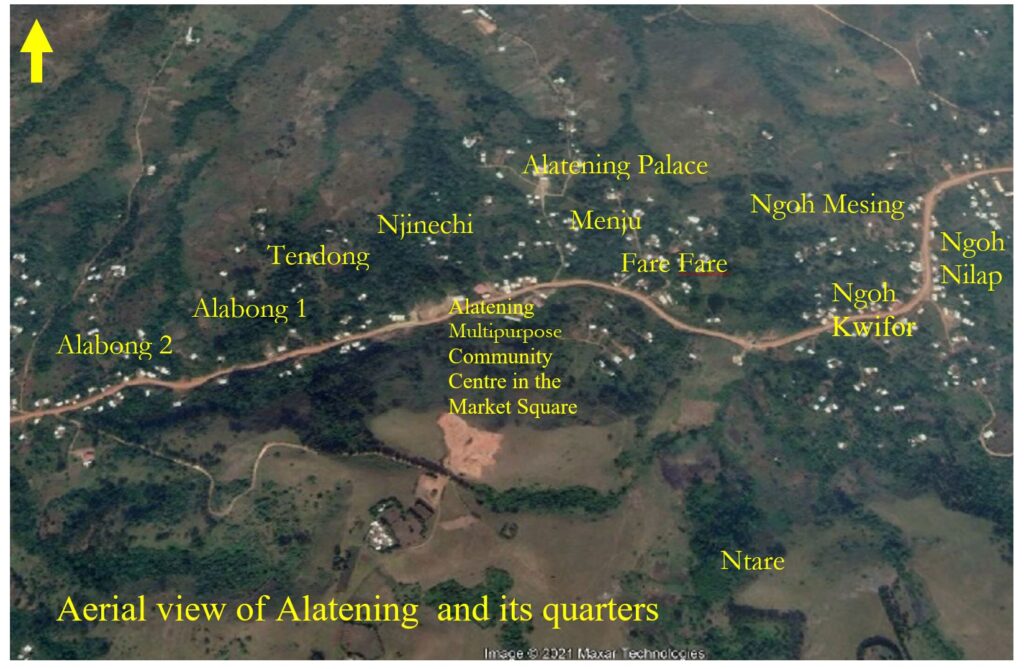Location
Location
Alatening is a village within Santa Subdivision of Mezam Division in the Northwest Region of Cameroon. It is situated about three kilometers along the mile 8 Akum-Baba II-Mbu-Bali road. The New Trans African Highway cuts across the village and on completion shall link Akum-Baba II-Mbu-Ntafuwang (Bali-Nyonga) and the Bamenda – Mamfe Highway.
Alatening village shares boundaries with the following villages: Akum to the East; Mbatu to the North, Chomba to the Northeast; Baba II to the West and Mbei to the south (Figure 1). The village is located between latitudes 5°55′ and 5°67′ north and longitudes 10° 15′ and 10° 22′ east and covers a surface area of about 532.67 km2 as shown here.
The village is made up of 9 quarters, namely Munjuh, Mesing, Ngoh Nilap, Ngoh Quifor, Fare Fare, Tendong, Njinechi, Alabong (called 1 & 2) and Ntare. These are shown in the aerial image below.

Demographics and Socio-economic data
The total population of Alatening village is over 5000 people but only about 1000 persons (women, youth, children, men and the elderly) currently live there.
The village has a rich cultural heritage and ethnic diversity, including Muslims (mostly settled on the hilltop plains due to the pastoral activities) and Christians who are mostly settled in low lying areas and along the main road crossing through the village.
The village typically depends on agriculture for subsistence. This includes the cultivation of maize, beans, cocoyam, plantains, bananas, cassava, soya beans, some fruit crops, and a wide range of market garden crops – mainly huckleberry – but also tomatoes, cabbages, a variety of spices and some animal husbandry. Historically, coffee was a major cash crop produced in the village but the global economic crunch of the early 1990s and decreasing yields led to a complete disappearance of this activity in the village. Innovative projects to increase agricultural productivity using permaculture techniques are underway in the village. (hyperlink to the Agricultural project)
One of the challenges faced by villagers is the absence of potable water, especially as Alatening has never been duly supplied with public drinking water. It is against this backdrop that The village does not benefit from public water supply and the members of the village have traditionally relied on using and drinking untreated water obtained from streams. The the village developed a village developed a community water supply system several decades ago to prevent people from drinking and using untreated water usually obtained from streams. Unfortunately, which is in need of significant repairsthe community water system has dilapidated over the years and now in need of serious repairs .

